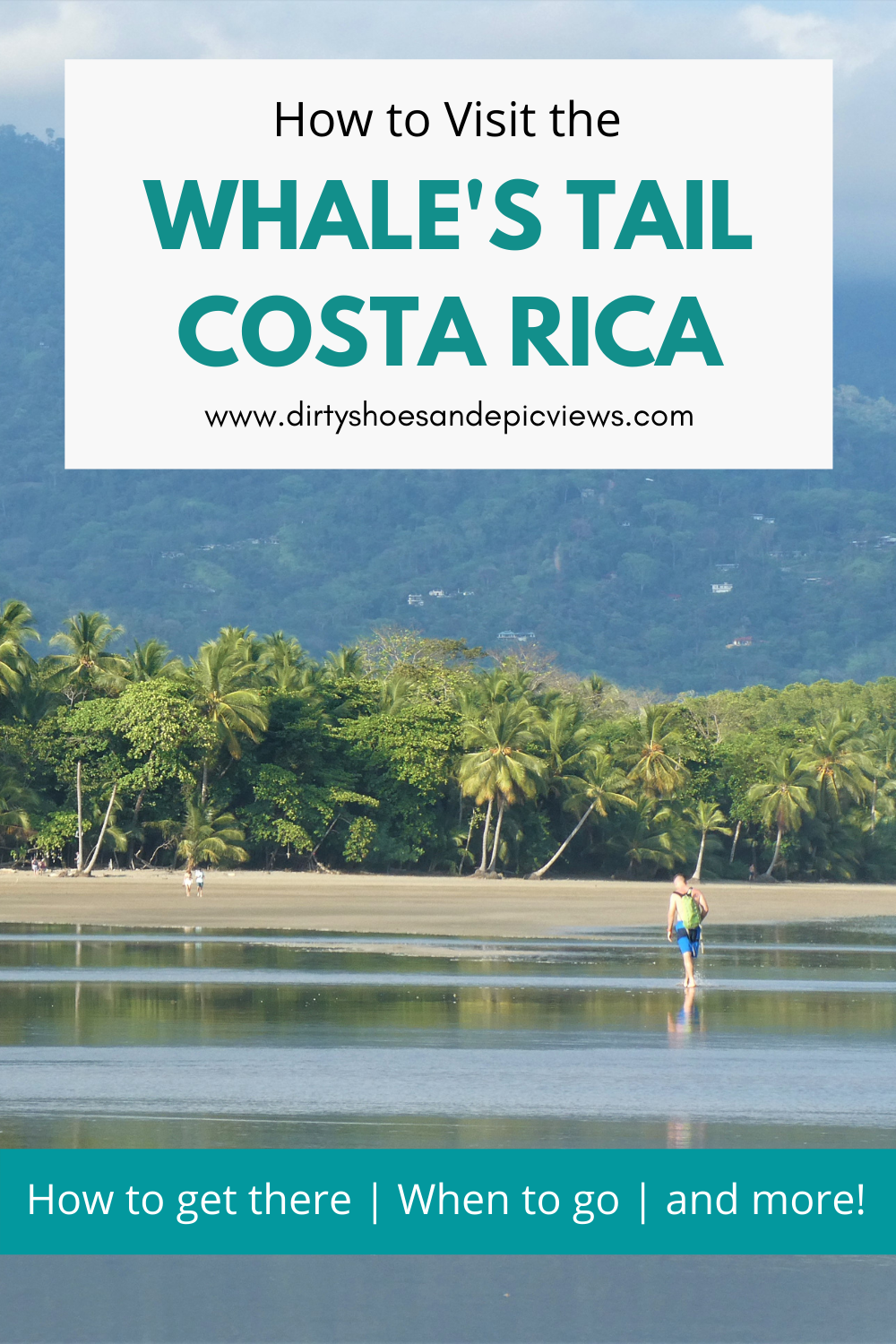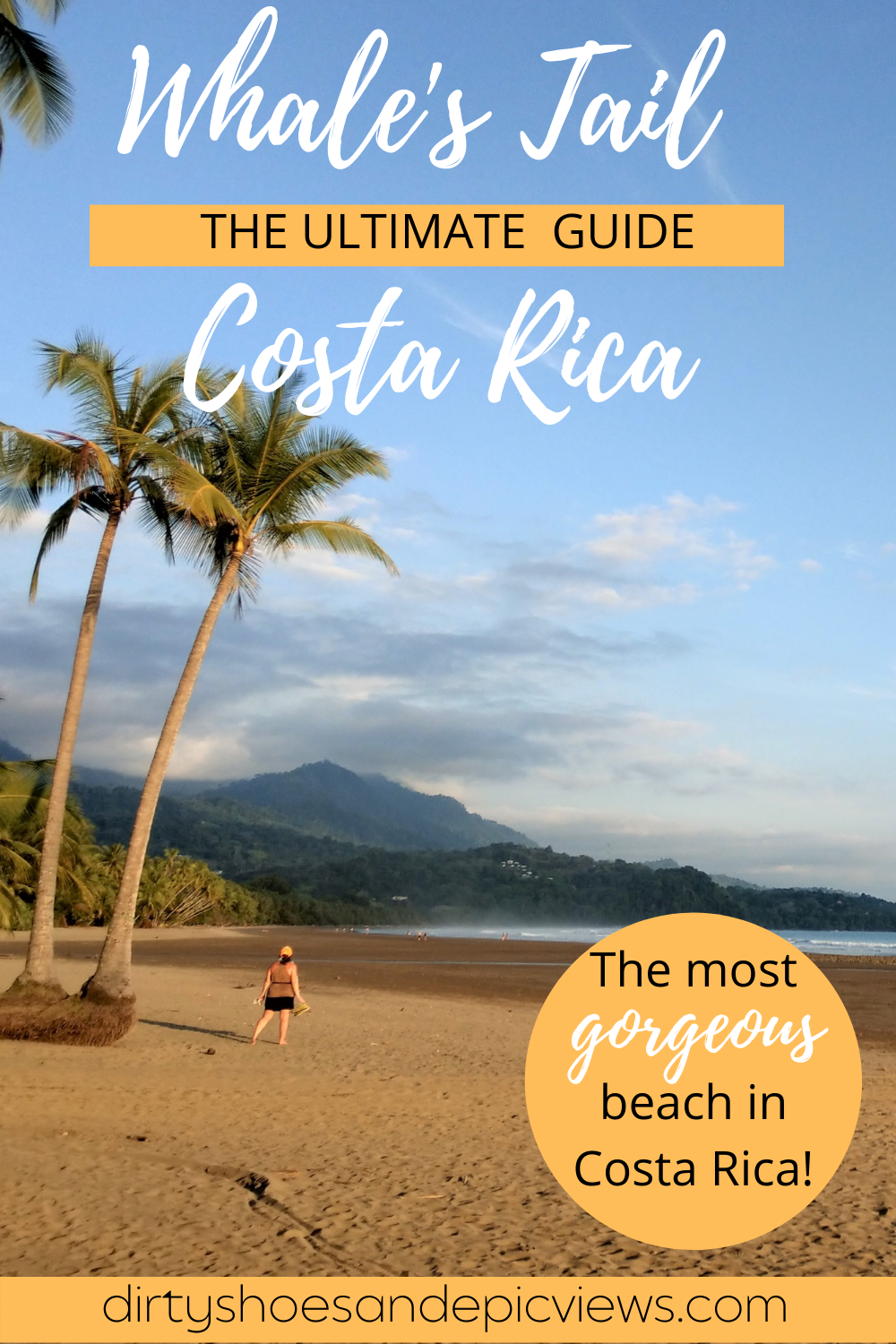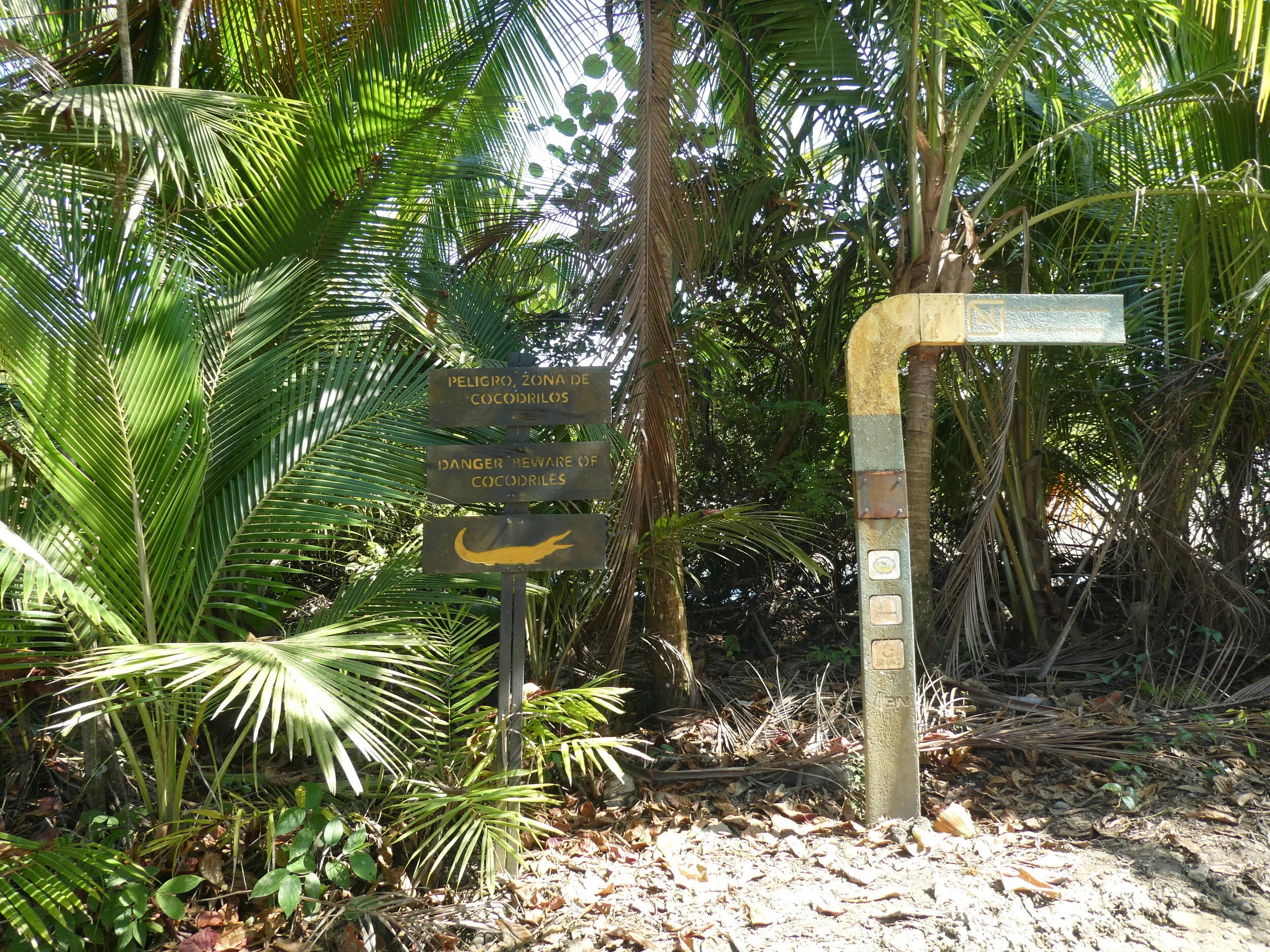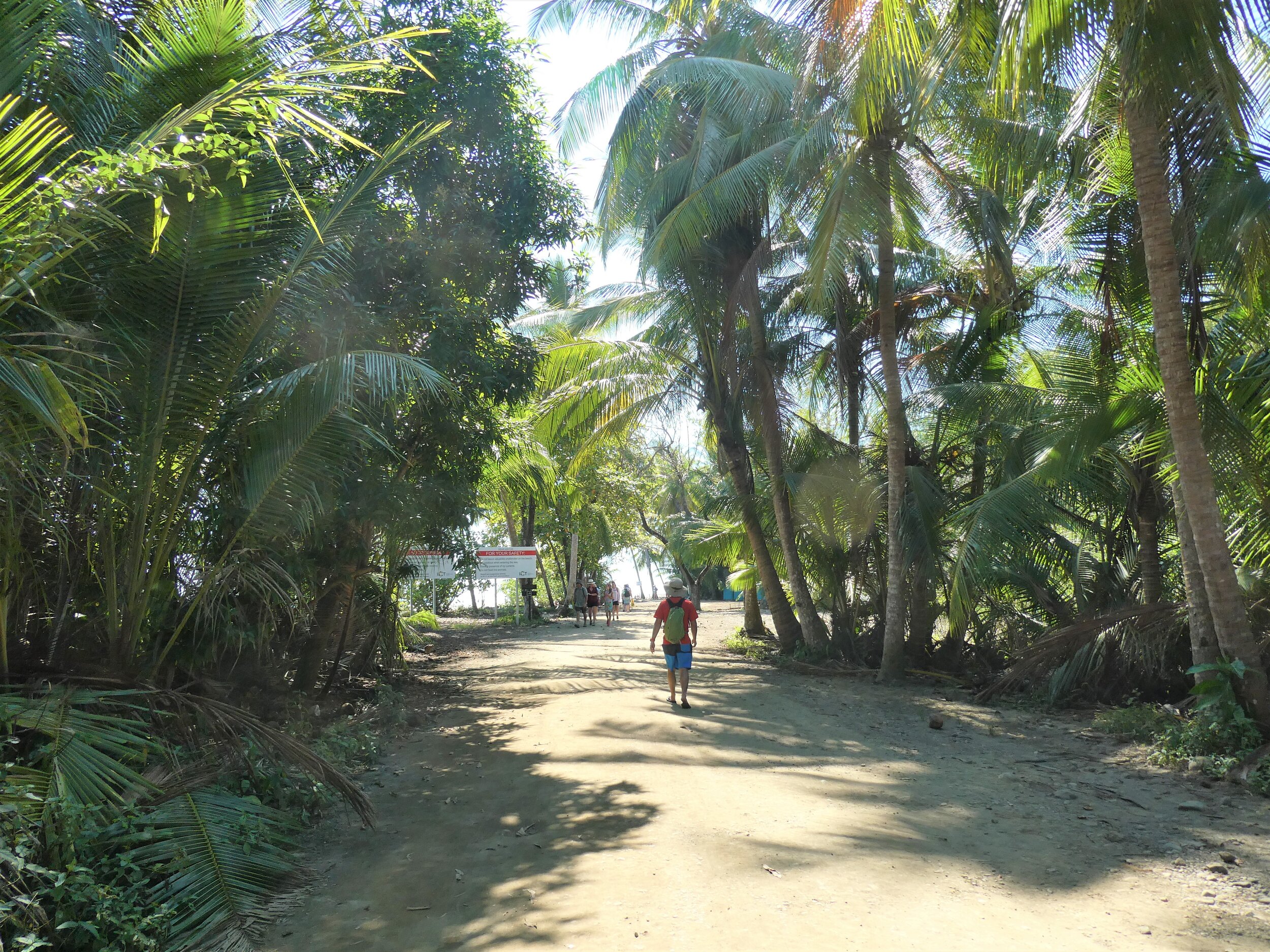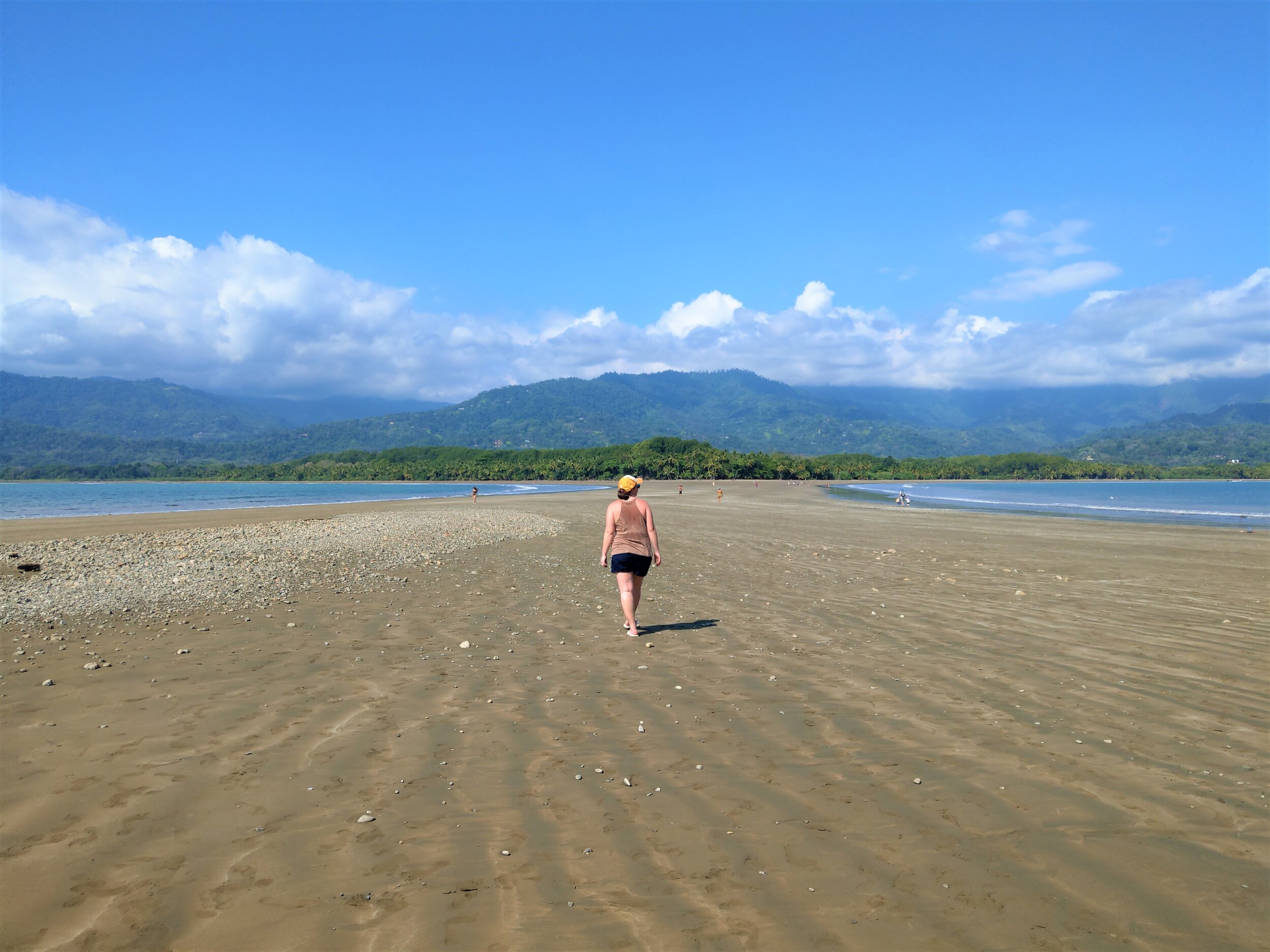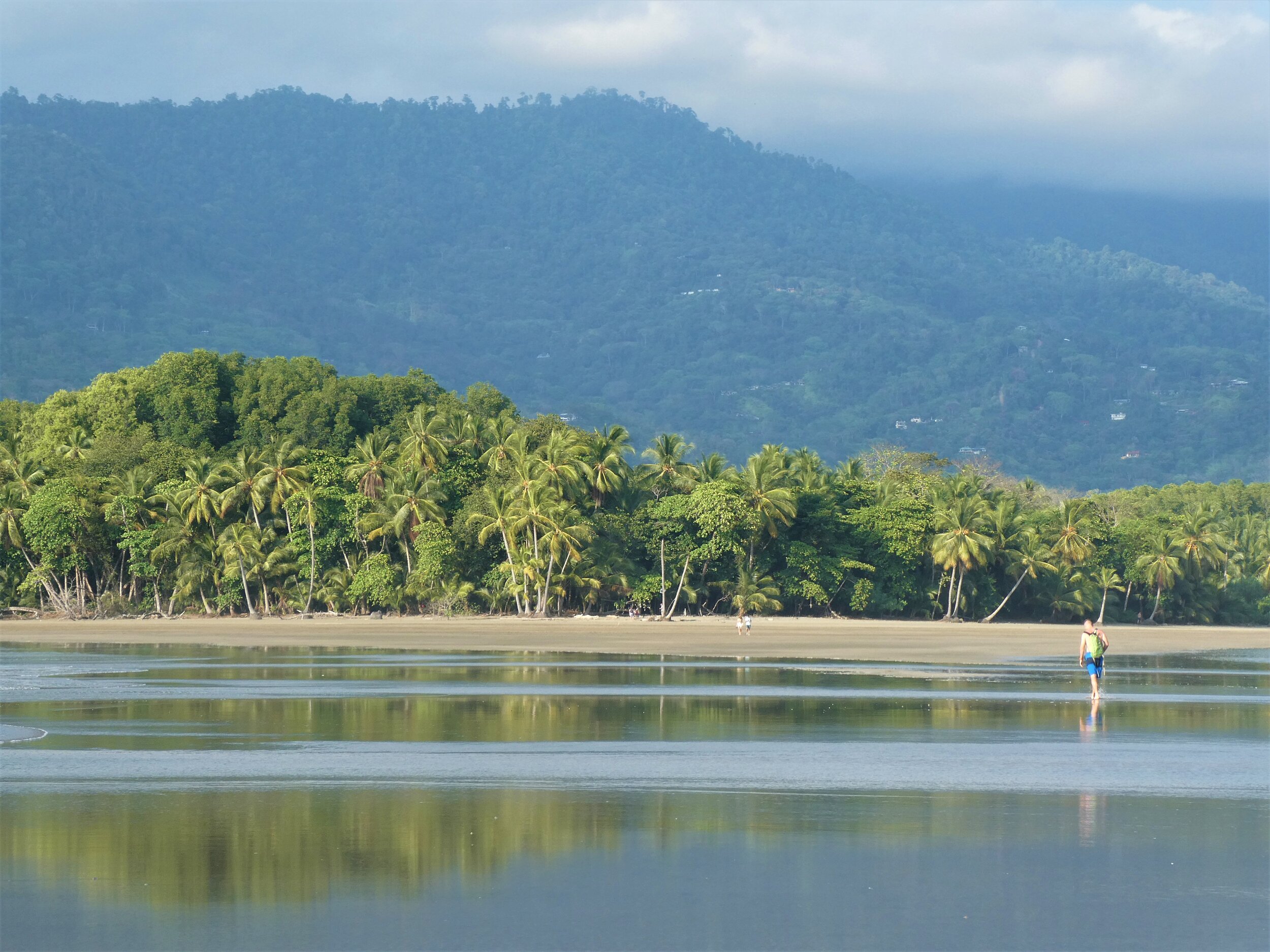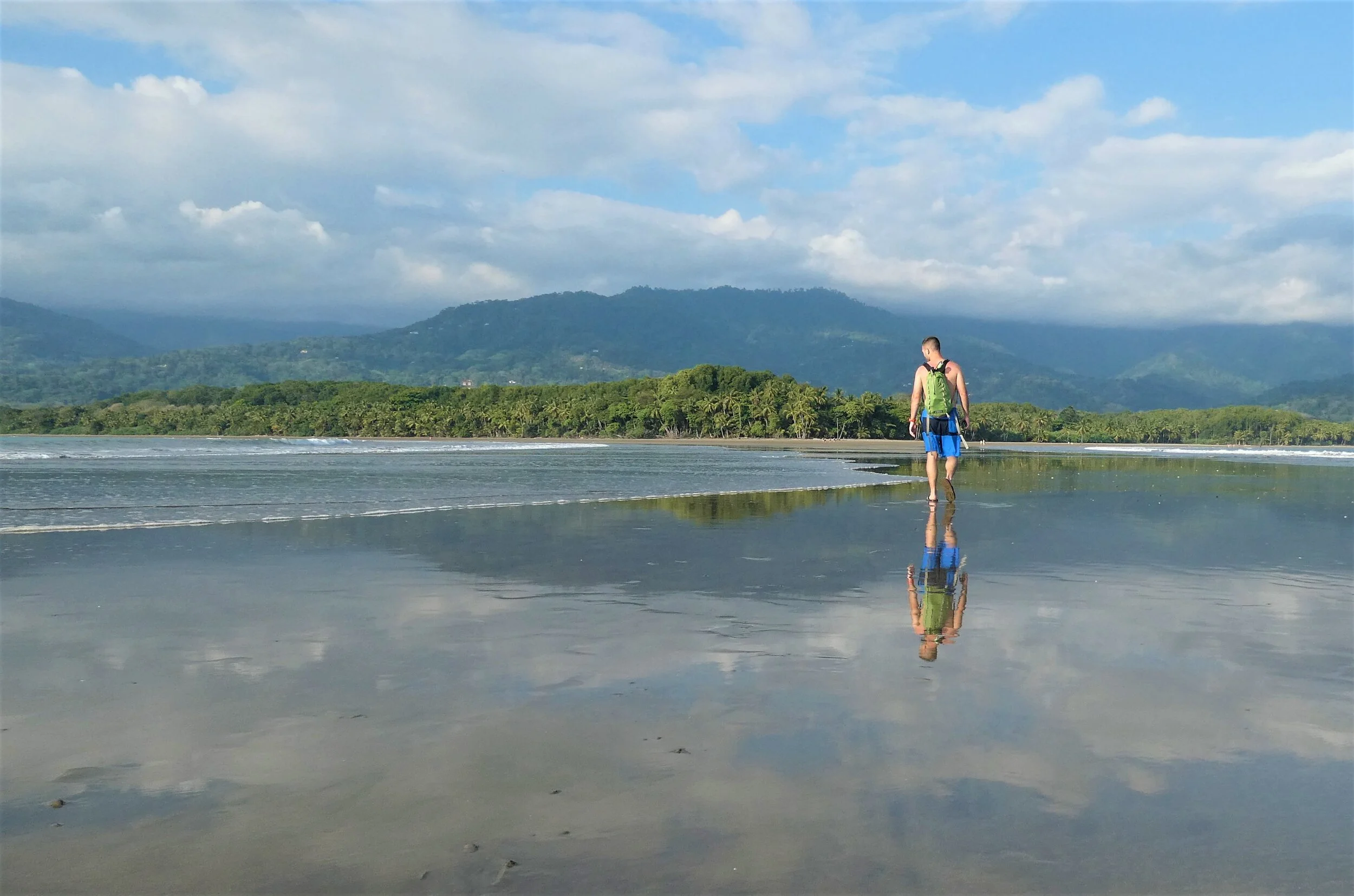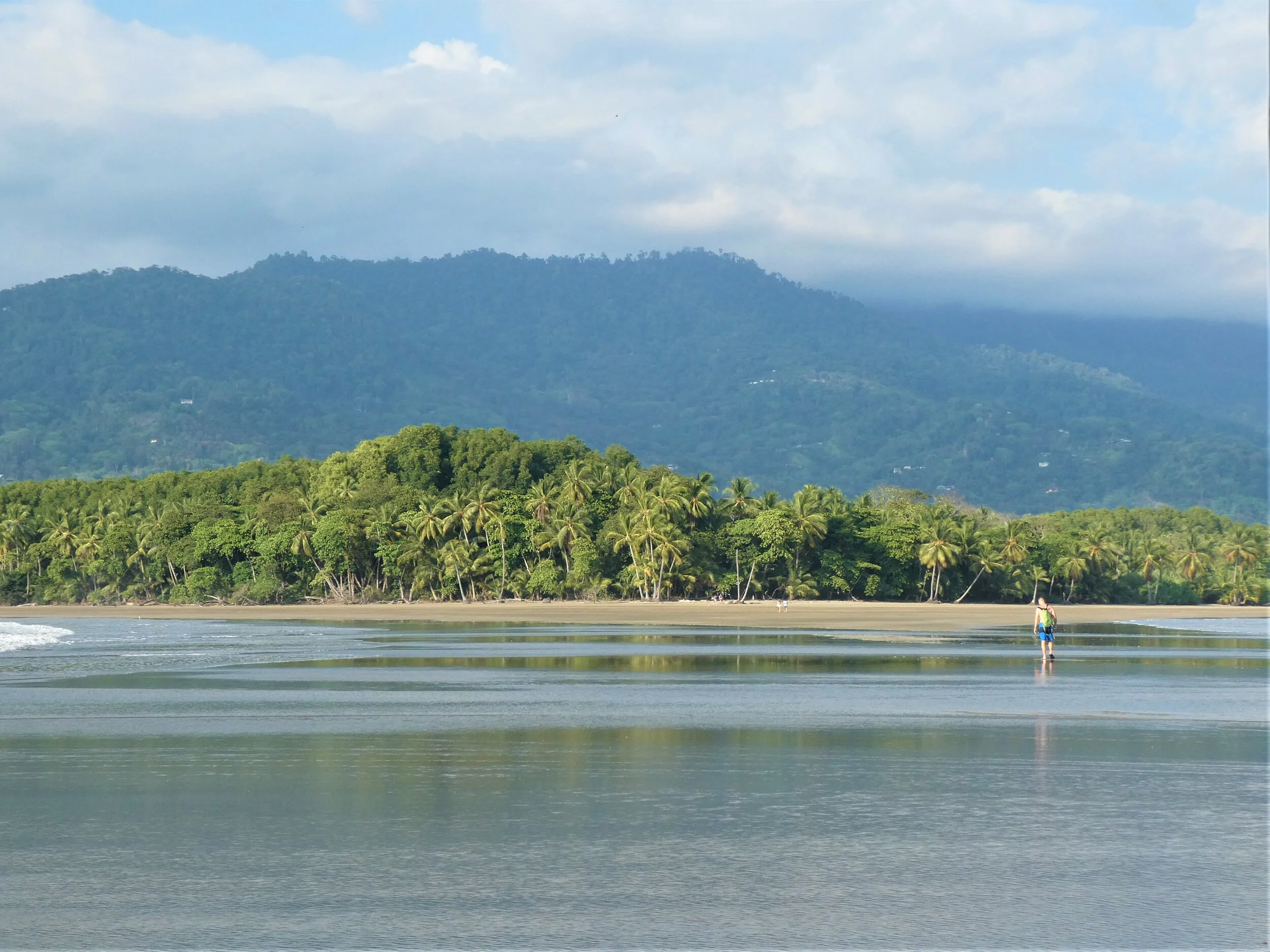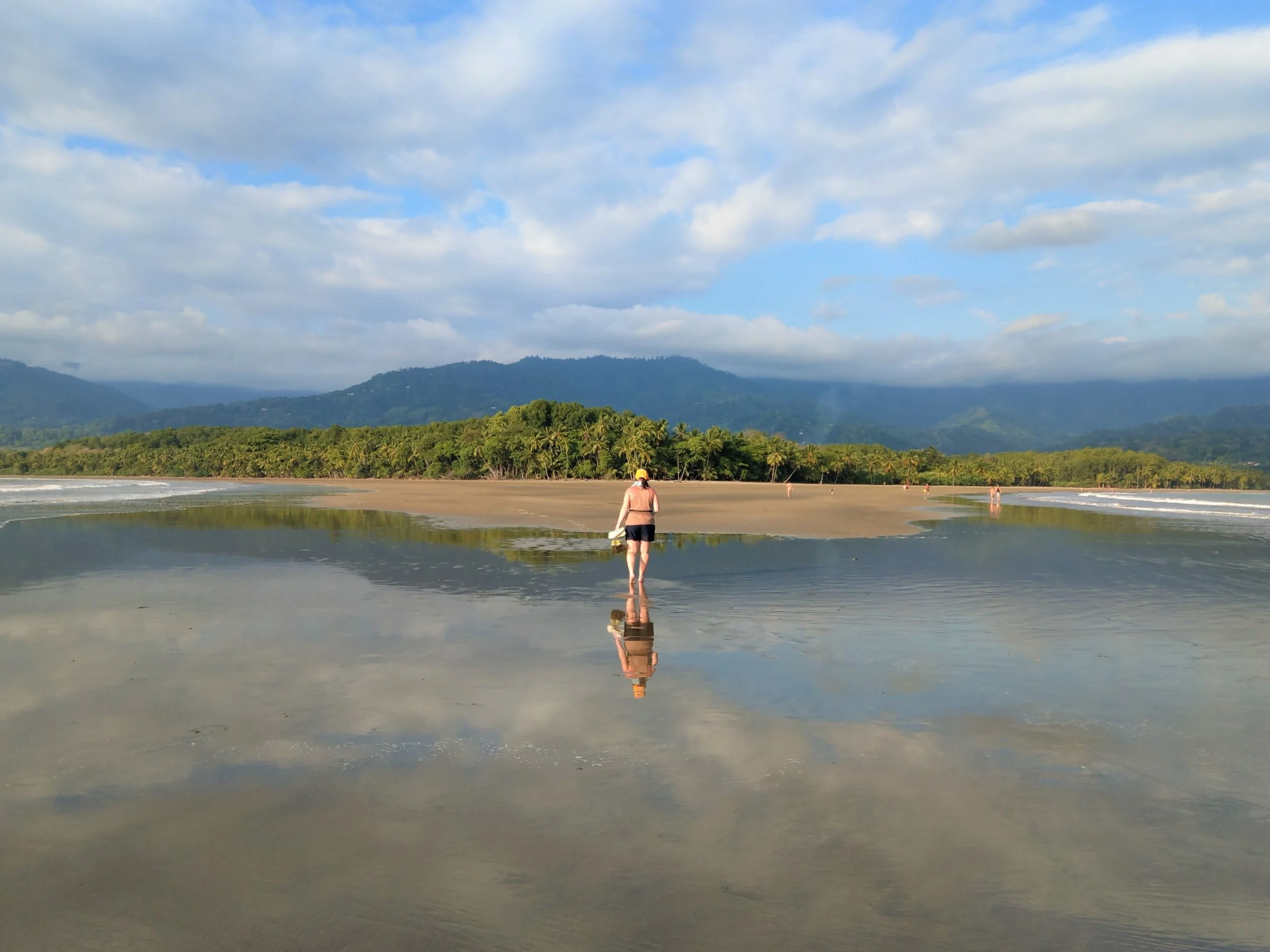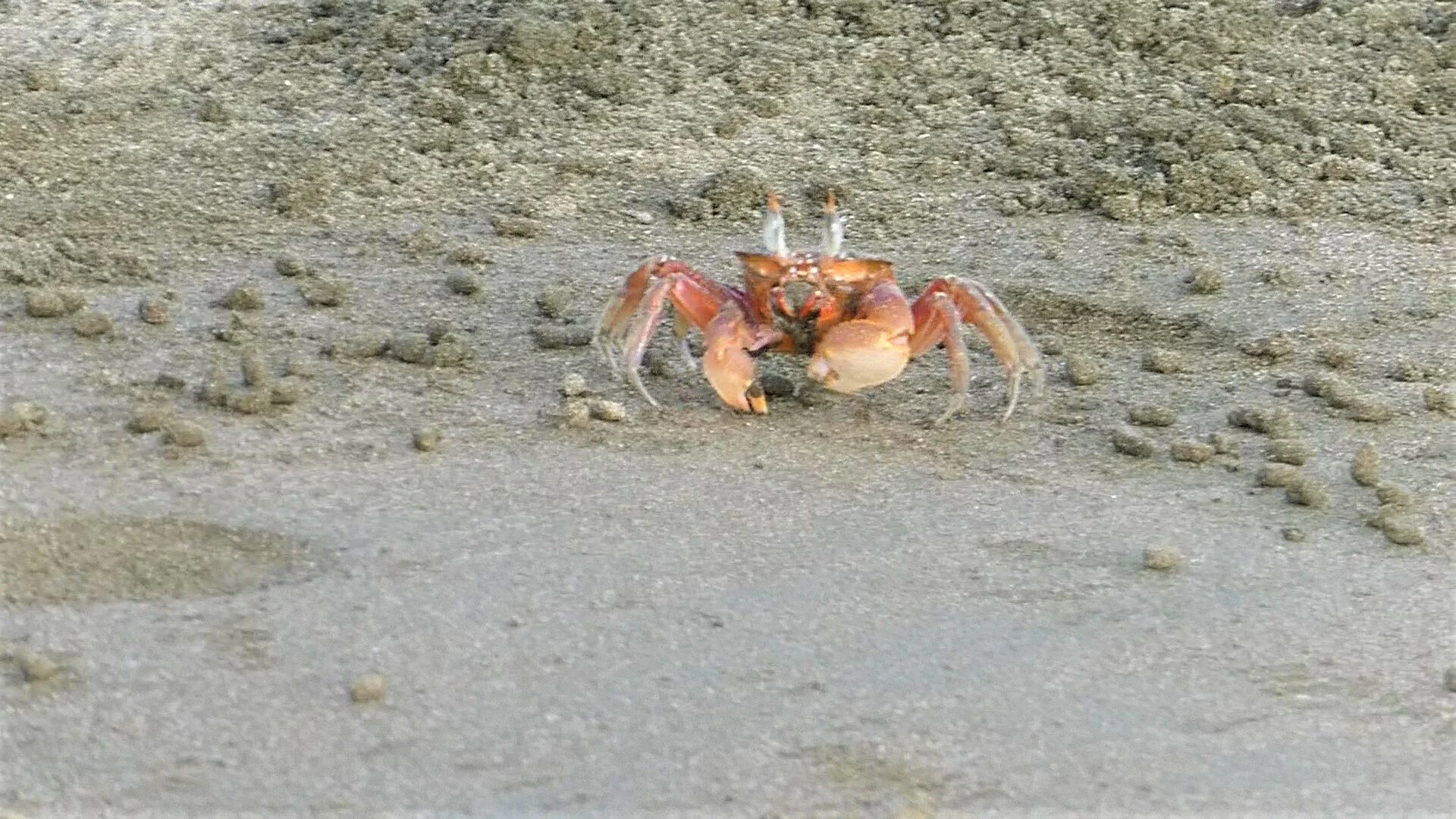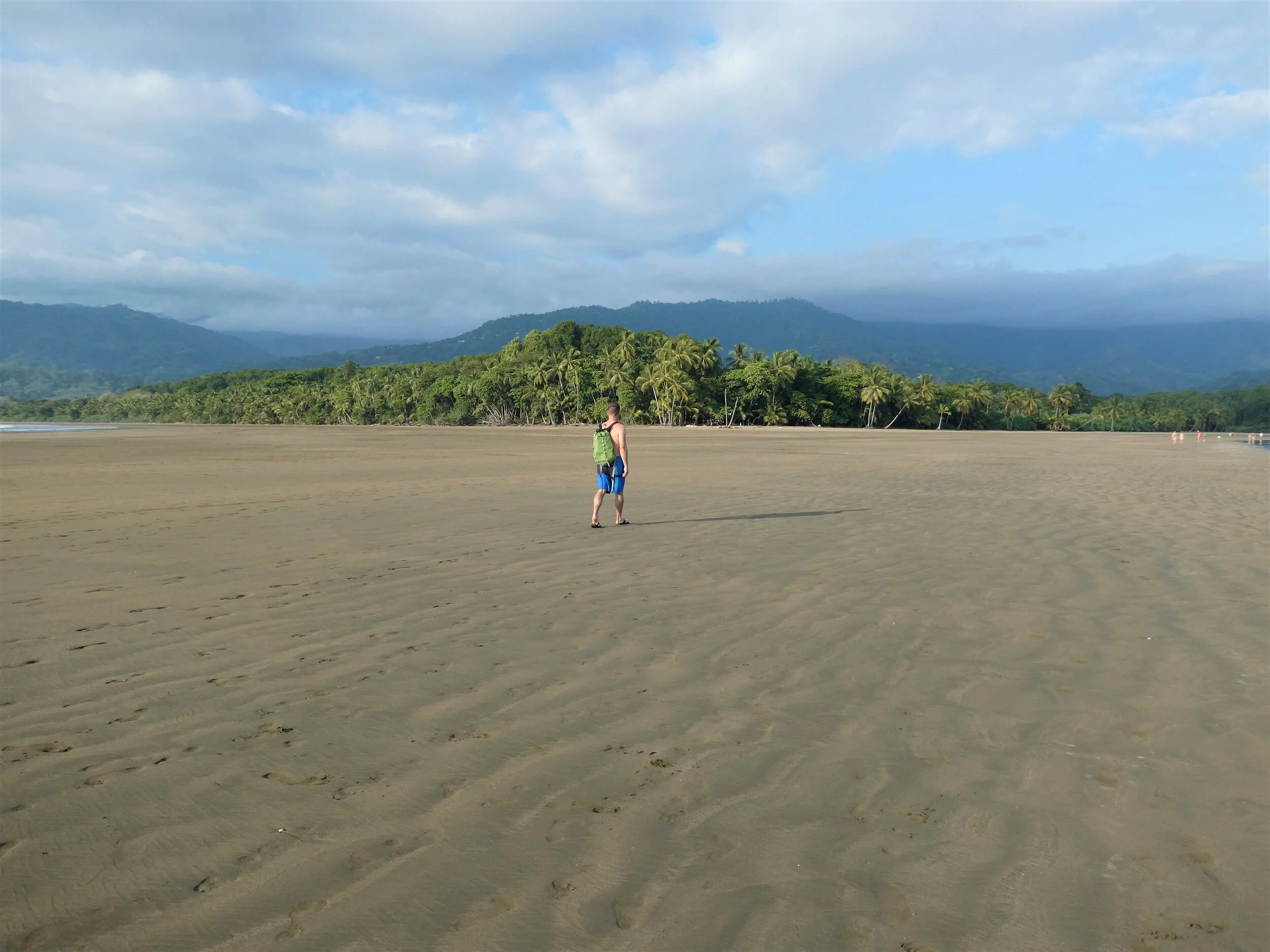How to Visit the Whale’s Tail in Costa Rica
Imagine looking out towards the ocean to spot whales from shore in one of the best places in the world for whale watching while standing on a sand bar that just so happens to be the exact perfect shape of an actual whale’s tail. What are the odds of that? Well, they’re pretty good if you happen to find yourself in Uvita, Costa Rica. Nature is pretty neat, right?!
So what exactly is the Whale’s Tail? We’re glad you asked! The Whale’s Tail, more formally called the Punta Uvita Tombolo (but Whale’s Tail is better, right?), is a large formation of sand and rock that becomes exposed at low tide and perfectly resembles the shape of…you got it…a whale’s tail. It results from converging currents that deposit the sand and rock into a uniquely shaped land bridge. As the tide comes in and covers the Whale’s Tail, you can see the converging currents in action, and, just so you know, it’s pretty neat. And, it just so happens to be located on one of the most picturesque beaches we visited in Costa Rica.
The Whale’s Tail in Costa Rica is a truly unique place and is a must-see for anyone travelling along the South Pacific Coast of Costa Rica. In this post, we’ll tell you everything you need to know about how to plan a visit to the Whale’s Tail.
Article Contents
Where is the Whale’s Tail?
How to get to the Whale’s Tail
When to visit the Whale’s Tail
Things to do at the Whale’s Tail
Tips for visiting the Whale’s Tail
Want to save this article for later? Pin it and come back any time!
Where Is the Whale's Tail?
The Whale’s Tail is located in Marino Ballena National Park in Uvita, along the South Pacific coast of Costa Rica.
Marino Ballena protects a 9 mile stretch of coastline containing amazing picturesque beaches, mangrove habitat, rainforest, and marine life. Just off the coast is the largest coral reef off of Central America’s Pacific coast. Plus, humpback whales migrate to these waters between December and April and again between July and November to breed.
With all of this, you can bet there is plenty to keep you busy! Kayaking tours through mangroves, snorkel tours along the coral reef, and whale watching tours are all good options here. Or, you can simply relax and swim on one of the many beaches in the area.
These beaches are gorgeous (I can’t say that enough!), with jungle-meets-the-sea coastlines, and what makes them even better is that they are relatively uncrowded compared to other more touristy places on Costa Rica! Even on the most popular beaches in the area, including the one with the Whale’s Tail, you won’t be surrounded by many people, and you’ll still have the feeling like you are walking along a pristine untouched tropical island. It’s a refreshing change of pace out here.
There are four beaches in Marino Ballena National Park. The Whale’s Tail is located on the most popular one, Playa Uvita.
How to get to the Whale's Tail
Getting to Uvita is fairly straight forward, as it sits right on the South Pacific Coast along the Carretera Costanera Sur (Route 34).
From San Jose: The drive is about 3 hours and you’ll pass through 4 tolls, the highest of which was 760 colones.
From Quepos/Manuel Antonio: Uvita is just an hour south of the popular Manuel Antonio along the Costanera Sur Highway.
From Sierpe: Sierpe is the gateway into Drake Bay on the Osa Peninsula and lies just an hour south of Uvita along the Costanera Sur.
How to get to Playa Uvita
The Whale’s Tail is on Playa Uvita, which is pretty easy to find. Off the Carretera Costanera Sur, there are several roads you can turn onto to take you there. If you put Uvita Beach into your GPS, it should take you to the right place. Some of the roads that you might end up taking to get here may be dirt, but they are doable with a sedan if you just take it slow.
One of the most direct ways to get there is to take a right (if coming from the North, a left if coming from the South) at the Dome Restaurant, just after passing over the Rio Uvita. You’ll follow this road all the way down to the beach entrance, just pass the Dolphin Tours building. The road dead ends at the entrance, where you’ll see a parking lot that will charge you 2,000 colones (about $4 USD) for the day.
Playa Uvita lies just at the end of this road
How to get to the Whale’s Tail on Playa Uvita
There’s a ranger station right at the entrance to Playa Uvita where you have to pay $6 USD per person and obtain your Marino Ballena park pass. There are also bathroom facilities here as well.
A super short walk will take you right onto the beach from here. The trail follows a small stream with some mangroves and signs warning of crocodiles. We heard from another couple we met during our trip that at high tide, you have to cross this stream to get onto the beach and that it got up to knee height! But if you’re there to see the Whale’s Tail, this won’t be an issue at all, because you’ll likely be here at low tide (more on that below).
As soon as you step onto the beach, you’ll have some of the most amazing beach views we saw in Costa Rica! The golden sand palm-tree lined beach seems to span on forever in each direction, with the lush green mountainous jungle serving as a gorgeous (there’s that word again!) backdrop. And no crowds at all! Can you tell I absolutely loved this beach?
Getting to the Whale’s Tail will require a bit further of a walk along the beach. Once you get out onto the beach, it will be to your right…if it’s low tide, you’ll see it out in the distance. It takes about 20 minutes to walk from the entrance out to the tip of the tail. It’s a hot walk in the direct sun and humidity so be prepared with the proper clothing, sunscreen, a hat, and plenty of water.
Walking up the middle of the sand bar…notice the ocean on both sides!
One you’ve reached the end of the Whale’s Tail, enjoy the beautiful views in all directions!
Best Time to Visit the Whale's Tail
You can visit the Whale’s Tail in Costa Rica any time of year, though it’s good to know that the Pacific Coast of Costa Rica has two main seasons…dry and wet. The dry season is from December to April and sees mostly sunny skies, while the wet season brings rainy days from May to November (mid-June to July are also relatively dry here). The rain generally tends to fall in the afternoon, though, so usually mornings are good for venturing out.
The dry season is generally the busier tourist time in Costa Rica, but like I said above, Uvita still doesn’t see nearly the same levels of visitors as other touristy places in Costa Rica. So, even during the busier dry months this park does not get crowded and the area is so big that people spread themselves out. In fact, when we were there in March, we were two of only a handful of people walking down the Whale’s Tail. It was pretty awesome being on one of the most beautiful beaches I’ve ever seen and not having the crowds of people like you would expect. It still felt relatively untouched and pristine.
In general, though, the South Pacific is hot and humid all year round. Prepare for 90 degree weather and high humidity no matter what time you visit the Whale’s Tail.
Other than the weather, there are other factors to take into consideration when planning your visit to the Whale’s Tail.
If you’re goal is to whale watch, you have a pretty wide window for this…between December and April as again between July and November would be the best time to visit the Whale’s Tail. The Whale’s Tail is one of the best places in the world to see Humpbacks from shore! It still may require a bit of luck, and patience, and a whale watching tour that goes out around the tail may be your best bet.
If you want to observe nesting turtles on Playa Uvita, between May and November is the best time to visit the Whale’s Tail to witness Olive Ridley and Hawksbill Sea Turtles nesting at night. Just be sure to keep your distance, don’t shine any lights their way, or startle them! They’ve made a long journey to get here!
If you are looking to snorkel, the dry season would be the best time to visit the Whale’s Tail. Rain during the wet season tends to wash lots of sediment into the ocean from the rivers that feed into it, causing very murky conditions with low visibility.
Important note for when to visit the Whale’s Tail: You can’t just see or walk out onto the Whale’s Tail any old time. The park is open from 7 am to 4 pm, but if the Whale’s Tail is something you want to see (and it should!), then you’ll have to time your visit around low tide, as this is when the sandbar becomes exposed and you can actually walk onto it. You can check the tide tables about a week to a month out here or here. The park closes at 4pm, but you can stay at the park later than this to watch the sunset (highly recommended!) or be there for a later low tide, although our hostel host did tell us that after 4pm, you can just walk into the park for free.
Best Things to Do at the Whale's Tail
Here are some of what we think are the best things to do at the Whale’s Tail!
Take a walk out to the tip of the tail and enjoy the views!
I fell in love with the Whale’s Tail as soon as I walked out onto it. I couldn’t get over the views. Once of my favorite things about Costa Rica was this sight right here, turning back towards the main beach and looking at the jungle meeting the sea.
Pretty awesome, right?
Once out on the tail, the “fins” turn into a rocky island that, at low tide, is filled with small tide pools that you might be able to see small fish or crabs in.
Enjoy the water
You can swim off the sides of the Whale’s Tail, as the rocky fins keep the waves and current from getting too strong here. Still, the Pacific Coast is known for strong currents and riptides, so if you aren’t sure, you can look up the information or ask a ranger before swimming. When we went, the waves were pretty big and constant (and fun to play in!), but still safe.
We spent a lot of time here swimming in the 85 to 90 degree water (yes, it’s that warm, and heavenly), playing in the waves and just bobbing up and down soaking up the sunshine and the views around us. Not a bad way to spend an afternoon in paradise.
Go snorkeling
We had read beforehand that snorkeling was possible and could sometimes be good off the Whale’s Tail at low tide, so we tried our luck and brought our snorkel gear. But, as soon as we got in, all we saw was silt. The water was super murky with absolutely zero visibility. The tide was coming in and the waves were pretty big that day, which was probably stirring up all the silt from the bottom.
However, plenty of companies offer snorkel tours. Marino Ballena actually houses the largest coral reef on the Pacific Coast of Central America, stringing together three small islands off the coast, called Las Tres Hermanas, or The Three Sisters. Tours will take you to various places around the Whale’s Tail and these islands.
Or even better, snorkel tours also go out to Cano Island, a biological reserve that is one of the best places to snorkel in Costa Rica. The catch? It’s about an hour and a half boat ride each way and will set you back about $130 dollars or more.
Go whale watching
Whale watching is one of the most common activities to do during a visit to the Whale’s Tail. And while it’s true that this has been said to be a great place to see whales from shore, it still takes patience, luck, and a good eye. Whale watching tours will get you up close to the action.
Whales migrate here from the North between December and April and from the south between July and November, so you have a pretty good window of time to see them. In fact, Costa Rica has the longest whale watching season in the world! Dolphins and sometimes turtles might also be spotted, and you get nice views back to the coast and the different beaches. There is also an annual Whale Festival takes place here for a few weeks in September, coinciding with the time with the best chances of seeing whales here. During the festival you can get discounted whale watching tickets for short tours.
Go kayaking
Many kayaking and even SUP tours go along the Whale’s Tail at low tide and some even stop at places for snorkeling. Other tours take you through the quiet calm mangrove rivers to spot wildlife like monkeys, caimans, birds, and even sloths if you’re lucky.
Spend a day at the beach
Playa Uvita is more than just the Whale’s Tail (although that is arguably the coolest part about it!). You can spend a whole day here just relaxing on the beach, swimming, and walking along the shore being dazzled by the views. It truly is a serene and peaceful location.
Sunsets here are pretty alright, too.
We had read that this area of lush jungle surrounding the park is home to lots of wildlife, including monkeys, iguanas, sloths, racoons, and lots of birds. We didn’t see any of these, although we weren’t really looking too hard, and didn’t spend much time walking along the edge of the beach. But we did see a lot of funny looking crabs crawling all across the beach on our walk back from the Whale’s Tail!
Tips for Visiting the Whale's Tail
Make sure you bring lots of sunscreen and reapply it often, and a hat wouldn’t be a bad idea. You’ll be in direct sunlight the whole time you are on this beach and walking out to the Whale’s Tail, and just speaking from experience, that sun gets intense!
It gets very hot (90 degrees and up) and very humid. Make sure you bring plenty of water and snacks with you, as there is none on the beach. Keep in mind, if you are timing your visit with low tide, that might mean you’ll be walking out there midday in the intense heat. Be prepared for that.
Wear comfortable shoes that are good for walking in but that can also get wet (something like Chaco sandals are a good option here). It’s a decent length walk out to the top across hot sand, and the tip of the tail is quite rocky.
Don’t leave valuables in your car or unattended on the beach.
There are plenty of options for accommodations within walking distance of Playa Uvita, which is great because you don’t have to park your car each time you want to visit. Check out the Yubarta Lodge for a great low budget option less than a kilometer from the beach!
Since the Whale’s Tail is so big, you can’t really see the actual shape of it when you’re on the beach. If you drive up into the mountains a bit behind town, you can get some good shots back looking at the tail for a somewhat aerial view. You’ll need to have a 4x4, though, to drive on these dirt roads.
We hope you get a chance to visit the Whale’s Tail and experience this unique creation of nature! Let us know below if you need any other information to help plan your visit in the comments below!

